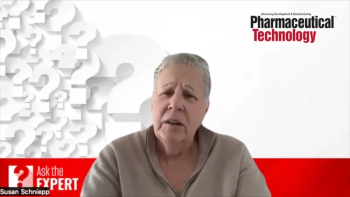
PTSM: Pharmaceutical Technology Sourcing and Management
- PTSM: Pharmaceutical Technology Sourcing and Management-05-09-2008
- Volume 4
- Issue 5
Globalizing Drug Development
Increased investment by the pharmaceutical and biotechnology majors in offshore early drug development creates opportunities and challenges for outsourcing.
Globalization continues to be an important issue in the internal investment and outsourcing strategies of the major pharmaceutical and biotechnology industries, including in early-stage development. Pharmaceutical and biotechnology companies and contract service providers are strengthening their positions in research and development (R&D) and clinical trials offshore, particularly in India and China.
Implications for outsourcing
A bottom-line question for pharmaceutical and biotechnology companies is whether offshore drug development, particularly in Asia, is still viable given recent problems with the pharmaceutical supply chain there. “Rising operating costs, particularly in China and India, and growing regulatory scrutiny in the wake of recent high-profile safety incidents may lead some developers to consider slowing, or even reversing, their global outsourcing activities, but doing so could cost them more in the long run,” said Kenneth I Kaitin, director of the
The Tufts CSDD analysis points to several key steps to effectively outsource drug development:
• Decide what to outsource based on an in-depth assessment of core competencies
• Achieve consensus across the organization on a standardized approach to outsourcing
• Be prepared to commit management time to administer external service providers.
• Annually review your forecast of planned studies and internal resources.
“Most importantly, companies need to keep in mind that one approach may not be appropriate for all development programs,” says Kaitin.“Some may require a tactical approach, which is more ad hoc and project-oriented, while others may benefit from a more formalized and portfolio-oriented strategic approach.”
Clinical-trial materials supply
The location of clinical trials is one issue to consider in pharmaceutical development. The globalization and increase in the number of clinical trials will impact the supply chain. A recent survey conducted by the management consultancy
“Globalization is having a significant impact on every industry, and the pharmaceutical and biotech space is no exception; this study validates that,” said Ellen Reilly, managing director of life sciences at BearingPoint, in a company release discussing the survey results. “As a result, these organizations need to be implementing best practices now to efficiently manage their clinical supply chains to bring new drugs to market faster and in an effective manner, while also remaining compliant with global regulations. Otherwise, they will be left in the dust trying to navigate this very dynamic and competitive market.”
Additional key findings of the study include:
• More than 57% of survey respondents anticipate increasing or maintaining the number of subjects participating in their Phase I, II, and III studies by 2010
• Sixty-nine percent plan to conduct at least four adaptive trials in 2010, a 30% increase over those that expected to conduct at least four adaptive trials in 2007
• Only 13% of clinical trials products shipped and received are on time, and only 90% are complete
• The most significant clinical-trial supply-chain challenge is getting the right kit at the right time to the right site
“Although companies are looking to new products to fuel future growth, the complexity, regulatory demands, and disconnected demand-sensing and product-supply processes result in an extended and expensive development process,” said Hussain Mooraj, research director of life sciences at AMR Research, in a company release. “The conundrum is how to accelerate the speed of development and drive down supply-chain costs at the same time.”
In January 2008, Bearing Point reported that
“We were facing a number of clinical-API supply-chain challenges such as long lead times and short forecast horizons, but our biggest issue was the inconsistency around ownership of the preshipment choreography,” said Donald Freeman, continuous improvement lead at Pfizer, in a Bearing Point release.
Other support services and outsourcing relationships are being formed with the migration of clinical trials abroad. For example, the management-consulting firm
Pharmaceutical R&D
The pharmaceutical and biotech majors are increasing their R&D capabilities in Asia, which in turn is fostering collaboration with local universities, research institutes, and contract-research organizations (CROs).
Genzyme. In April 2008,
Genzyme already markets “Synvisc” (hylan G-F 20) and“Thymoglobulin” (anti-thymocyte globulin rabbit) in China, and is preparing to introduce additional products next year. The company has a pilot program at Beijing Wujing Hospital for the cell therapy product MACI. Genzyme has 25 employees working in offices in Beijing and Shanghai. Last year, Genzyme began a collaboration with the Chinese firm
AstraZeneca.
GlaxoSmithKline. In 2007,
Sanofi-Aventis. In September 2007,
Opportunities for CROs
The rising presence of and interest by the pharmaeutical and biotech majors in China and Asia is creating opportunites for CROs, which are enhancing their capabilities, securing additional financing, and forming R&D pacts.
A recent example is
In October 2007,
In February 2008, NPIL Research & Development (NRDL), an independent company recently demerged from
“This additional collaboration with Nicholas Piramal is a prime example of the innovative risk-sharing relationships that Lilly is building around the globe as we implement our strategy of becoming a fully-integrated pharmaceutical network, or FIPNet,” said Robert W.Armstrong, vice-president, global external research and development for Eli Lilly, in a NPIL release.
NPIL also formed a R&D agreement with MSD Pharmaceuticals, the Indian subsidiary of
US-based CROs are joining the Asian fray.
Articles in this issue
over 17 years ago
Weak Link in the Pharmaceutical Supply Chainover 17 years ago
Will REACH Reach the US?Newsletter
Get the essential updates shaping the future of pharma manufacturing and compliance—subscribe today to Pharmaceutical Technology and never miss a breakthrough.




